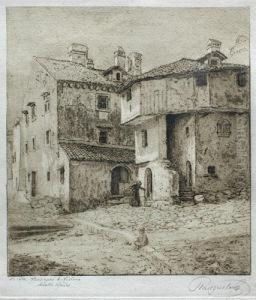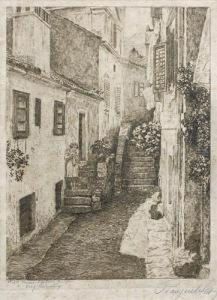Emil Ranzenhofer Paintings
Emil Ranzenhofer was an Austrian artist and illustrator, whose career spanned the turn of the 20th century, a period rich in artistic innovation and the emergence of modernism in European art. Born in 1864 in Vienna, Austria, Ranzenhofer was a contemporary of many artists who would come to define the era's aesthetic movements, including those associated with the Vienna Secession. His work, however, was distinct for its focus on illustration and graphic art, a medium through which he contributed to the visual culture of his time.
Ranzenhofer's artistic journey was reflective of the broader artistic movements of his time, notably Art Nouveau, with its emphasis on organic lines, intricate patterns, and a seamless blend of form and function. This was evident in his illustrations, which often featured elaborate designs and were characterized by a keen attention to detail and a flair for capturing motion and emotion. Beyond illustration, Ranzenhofer's oeuvre included works in various mediums, such as painting and sculpture, though it was his printed works that garnered him the most recognition.
Throughout his career, Ranzenhofer was deeply involved in the artistic community in Vienna. He contributed to numerous periodicals and books, providing illustrations that captured the zeitgeist of the fin-de-siècle Vienna. His illustrations were not merely decorative but served as critical commentary on the society and politics of his time, reflecting the anxieties and aspirations of a world on the brink of modernity.
Despite his contributions to the art world and the distinct style that marked his work, Emil Ranzenhofer has not been as widely remembered as some of his contemporaries. This oversight may be attributed to the ephemeral nature of illustration work compared to the more permanent mediums of painting and sculpture. Nevertheless, his work provides a valuable insight into the visual culture of turn-of-the-century Austria and represents an important chapter in the history of graphic art.
Emil Ranzenhofer died in 1930, leaving behind a legacy that, while perhaps not as celebrated as that of some of his peers, is emblematic of the transition from the traditional to the modern in art. His body of work continues to be studied by those interested in the evolution of graphic design and illustration, offering a window into the artistic and cultural shifts of early 20th-century Europe.

